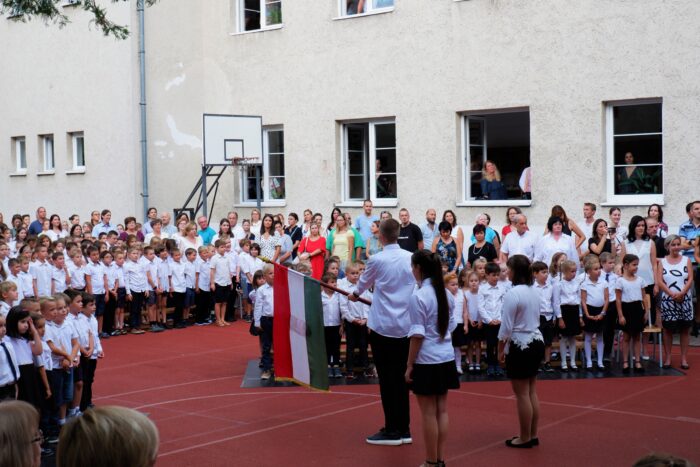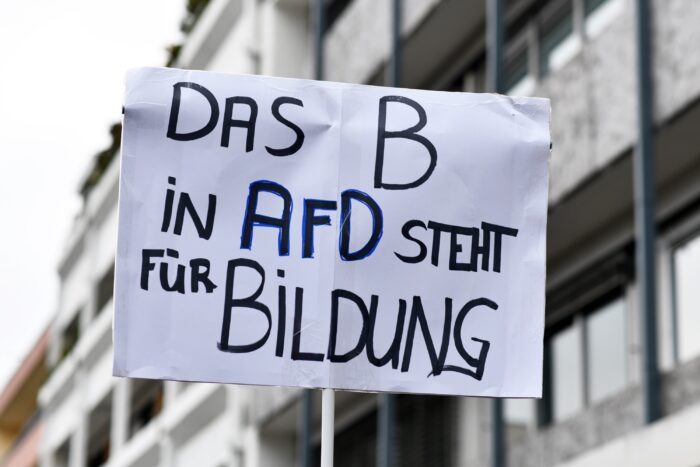Find all related Progressive Post
Progressive Post

Lithuania, like many other countries in East-Central Europe, is on a borderline between a so-called limited-access system marked by a hybrid or authoritarian type of rule and an open-access system characterised by vibrant civil society, universalist ethic values and strong democratic institutions The legislative election in October 2020 has been a litmus test indicating which direction Lithuania is taking.
Not long after the eastern enlargement of the EU, a rise of anti-establishment parties was observable throughout the region. In some cases, populists even managed to form governments and to eventually subvert democratic institutions. The previous elections to the Lithuanian Parliament (the so-called Seimas), in 2016, were critical in this regard.
Back then, the centrist-populist Lithuanian Farmers and Greens Union came to power after winning 54 out of 141 MP seats and defeating both the centre-right and the centre-left mainstream parties. Led by the Agri-oligarch Ramūnas Karbauskis, they resembled a business party, whose leader single-handedly rules it as its company – a type of political organisation increasingly popular in Southern and East-Central Europe.
Spurred by their popular non-partisan Prime Minister candidate Saulius Skvernelis, a former chief of the police and Interior minister, they successfully appealed to voters with an anti-corruption agenda and a promise to break a supposed cartel of the Conservatives and the Social Democrats that had run the country by turns. Soon however, after getting into power, they started to mix their reformist zeal with efforts to undermine the autonomous state institutions responsible for horizontal accountability such as the Constitutional Court, the Central Bank, or the public broadcaster.
Despite sound economic growth during their rule, the Farmers and Greens lost all three elections in 2019 – the local, the European, and the presidential ones – and they were underdogs in the polls of early 2020. However, when the Covid-19 pandemic broke out, the tables were turned around. In the wake of a national call to fight an invisible enemy, the popularity of the incumbents started to rise again. Furthermore, they utilised the opportunity of weakened parliamentary control to significantly increase public expenditure without a corresponding budgetary review. Among their last measures, just before the elections, was a single-time cash benefit of 200 euros for pensioners, as well as a promise to pay a “thirteenth pension” at the end of the year.
However, that was not enough for them to rewin a simple majority in the Seimas. Receiving 32 seats, the Farmers and Greens came distant second behind the centre-right Conservatives (Homeland Union – Lithuanian Christian Democrats) with 50 seats. Furthermore, their junior coalition partners, the Social Democratic Labour Party (a splinter from the opposition centre-left Social Democrats) and the Polish Electoral Action, fell short of the five-percent threshold in the multi-member district and got only three seats each in single-mandate districts.
Elections in 2020 were also marked by the fiasco of numerous small nationalist and Eurosceptic parties that failed to unite and thus collected only between one and two percent each. On the other hand, a newly created pro-business Freedom Party carried out an innovative electoral campaign focusing on ideas of same-sex marriage and the legalisation of cannabis, beat electoral forecasts, and received 11 mandates. Together with another pro-business party, the Liberal Movement (13 seats), they will most likely form a coalition headed by the Conservatives and their electoral leader, the former finance minister, and 2019-presidential candidate, the non-partisan Ingrida Šimonytė.
However, the overall picture of Lithuanian democracy after the election is not that rosy as it might seem at first glance. Only 47.8 percent of voters participated – it is the second-lowest turnout in history. Although the re-emergence of the pandemic could have played a role in discouraging some voters to participate, the low turnout reveals a high level of disenchantment of citizens with politics in Lithuania. Even if democratic backsliding has so far been prevented, another regional trend – democratic hollowness (see Béla Greskovits and Licia Cianetti) – is particularly visible. The fragility of the party system in Lithuania is also reflected by the fact that the main contenders of these elections, the Conservatives, as well as the Farmers and Greens, were represented by non-partisan politicians – Šimonytė and Skvernelis. Some other parties emulated such tactics or put forwards Prime Minister candidates who themselves were not participating in the elections. This reinforced the impression that voters were given to elect a new Prime Minister rather than a new Parliament.
The economic outlook is also rather gloomy. Against the background of another wave of the covid-19 pandemic, a new government will inherit an underfinanced public sector, a high degree of social exclusion and poverty, stagnation in fighting corruption, and a record level of public debt. Although a new EU financial perspective for 2021-2017 might alleviate the long-standing economic problems of the country, it would require formidable skills of leadership and governance to remedy the current situation.
The Social Democrats will have to restructure themselves further to win back the trust of the voters. The main centre-left party, which ruled the country about half of the time since 1990, experienced a crushing loss in 2016 (falling from 39 to 17 seats) and was unable to fully recover, despite all efforts to refurbish its image. Given an even worse electoral outcome of 2020 (13 seats), the main future tasks for the party are three: (a) to make its internal structures both more effective and democratic; (b) to build stronger ties with trade unions and progressive social movements; (c) to find a way into the hearts and minds of the urban population.
Related articles:
| Cookie | Duration | Description |
|---|---|---|
| cookielawinfo-checkbox-advertisement | 1 year | Set by the GDPR Cookie Consent plugin, this cookie is used to record the user consent for the cookies in the "Advertisement" category . |
| cookielawinfo-checkbox-analytics | 11 months | This cookie is set by GDPR Cookie Consent plugin. The cookie is used to store the user consent for the cookies in the category "Analytics". |
| cookielawinfo-checkbox-functional | 11 months | The cookie is set by GDPR cookie consent to record the user consent for the cookies in the category "Functional". |
| cookielawinfo-checkbox-necessary | 11 months | This cookie is set by GDPR Cookie Consent plugin. The cookies is used to store the user consent for the cookies in the category "Necessary". |
| cookielawinfo-checkbox-others | 11 months | This cookie is set by GDPR Cookie Consent plugin. The cookie is used to store the user consent for the cookies in the category "Other. |
| cookielawinfo-checkbox-performance | 11 months | This cookie is set by GDPR Cookie Consent plugin. The cookie is used to store the user consent for the cookies in the category "Performance". |
| csrftoken | past | This cookie is associated with Django web development platform for python. Used to help protect the website against Cross-Site Request Forgery attacks |
| JSESSIONID | session | The JSESSIONID cookie is used by New Relic to store a session identifier so that New Relic can monitor session counts for an application. |
| viewed_cookie_policy | 11 months | The cookie is set by the GDPR Cookie Consent plugin and is used to store whether or not user has consented to the use of cookies. It does not store any personal data. |
| Cookie | Duration | Description |
|---|---|---|
| __cf_bm | 30 minutes | This cookie, set by Cloudflare, is used to support Cloudflare Bot Management. |
| S | 1 hour | Used by Yahoo to provide ads, content or analytics. |
| sp_landing | 1 day | The sp_landing is set by Spotify to implement audio content from Spotify on the website and also registers information on user interaction related to the audio content. |
| sp_t | 1 year | The sp_t cookie is set by Spotify to implement audio content from Spotify on the website and also registers information on user interaction related to the audio content. |
| Cookie | Duration | Description |
|---|---|---|
| CONSENT | 2 years | YouTube sets this cookie via embedded youtube-videos and registers anonymous statistical data. |
| iutk | session | This cookie is used by Issuu analytic system to gather information regarding visitor activity on Issuu products. |
| s_vi | 2 years | An Adobe Analytics cookie that uses a unique visitor ID time/date stamp to identify a unique vistor to the website. |
| Cookie | Duration | Description |
|---|---|---|
| NID | 6 months | NID cookie, set by Google, is used for advertising purposes; to limit the number of times the user sees an ad, to mute unwanted ads, and to measure the effectiveness of ads. |
| VISITOR_INFO1_LIVE | 5 months 27 days | A cookie set by YouTube to measure bandwidth that determines whether the user gets the new or old player interface. |
| YSC | session | YSC cookie is set by Youtube and is used to track the views of embedded videos on Youtube pages. |
| yt-remote-connected-devices | never | YouTube sets this cookie to store the video preferences of the user using embedded YouTube video. |
| yt-remote-device-id | never | YouTube sets this cookie to store the video preferences of the user using embedded YouTube video. |
| yt.innertube::nextId | never | This cookie, set by YouTube, registers a unique ID to store data on what videos from YouTube the user has seen. |
| yt.innertube::requests | never | This cookie, set by YouTube, registers a unique ID to store data on what videos from YouTube the user has seen. |
| Cookie | Duration | Description |
|---|---|---|
| COMPASS | 1 hour | No description |
| ed3e2e5e5460c5b72cba896c22a5ff98 | session | No description available. |
| loglevel | never | No description available. |


